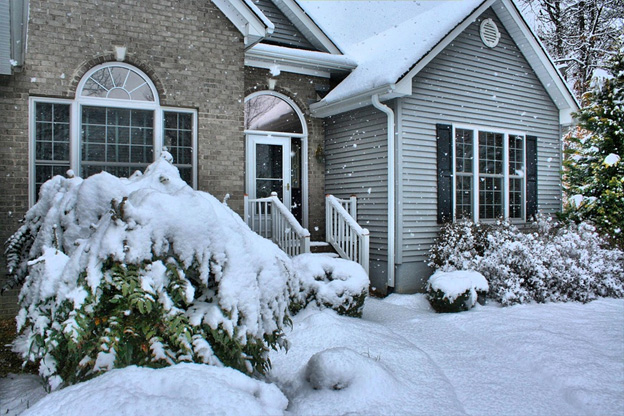
Do enjoy the sight of snow falling down from the comfort of your home, dressed in your favorite winter sweater as the fireplace gently crackles in the background? A jazz record and a bowl of freshly baked ginger cookies in hand, and what you have is a proper Christmas postcard.
Oh, and try not to think about this month’s energy bill.
But let’s venture back to reality just for a second, we could help you lower those numbers without ever lowering your heat. At least 30% of warmth escapes through doors if they are not properly sealed. To have yourself a comfortable winter that won’t break your bank, it’s necessary to winterize your doors and locks.
Here’s how:
Mind the Gaps
Before you can properly seal every door crack in your home, you need to locate where those gaps are. Light is your best friend in doing so, so either wait for the sun to rise, or use a flashlight. As you close the door, the light from the outside will find its way through the cracks, just like your energy use does.
Alternatively, you can light a match.
This technique relies on light too, but it’s even more effective when there’s some wind howling on the outside. Bring the match very closely to the door and move it around to see how the flame behaves. With unsealed doors, the flame will flicker in front of the gap. That’s exactly where the cold makes its way into your home.
Seal Air Leaks
To seal these gaps, you can use caulk or weather stripping. Whichever technique you choose, make sure that you can close the door all the way, and apply as many layers of caulk or weather stripping as you need. For threshold drafts, which leak air too, fix a rolled-up towel under the bottom of the door.
Winterize Locks
Now, locks cannot directly affect your energy bill, but they can cause some inconvenience during the cold winter months. This is especially true for car locks, as they tend to freeze more easily when in contact with water and low temperatures. If you’re unlucky, the same can happen to your home lock.
Use putties or duct tape to keep the moisture out. If the lock still freezes, use a lock lubricant, some graphite, or de-icer to help you thaw it. Never use hot water, as it freezes much faster than you’d expect. Coat the key with hand sanitizer instead, insert it very gently, and wait for about 30 seconds.
For additional information on winterizing locks or 24h emergency locksmith services, contact the expert locksmiths at 24/7 London Locksmith.